Kon-Vex Playing Cards
Waddington’s introduced a series of unusual shapes in the early 1950s.
‘Kon-Vex’ Playing Cards
Presumably in the wake of the lifting of wartime restrictions on paper, card and printing, Waddington’s introduced a series of unusual shapes in the early 1950s. They resurrected the old circular cards, renamed ‘Rondo’, and produced convex cards (‘Kon-Vex’), the Zulu Shield pack (just ‘Zulu’ on the box) and ‘Slimline’ cards, which were narrower than the usual bridge cards and had a Barribal back design. There was also a De La Rue version of ‘Slimline’ with Goodall courts and different backs. A ‘Kon-Vex’ version of the Coronation cards of 1953 was produced alongside the standard size. Interestingly, the standard sized packs are cut from the same sheets as the convex ones, as the image of the Queen still has convex sides. The courts used for the convex and slimline packs are the only example of a turned version of the Waddington design. Convex cards were not new: convex and concave cards had been produced in the U.S. in the 1920s.
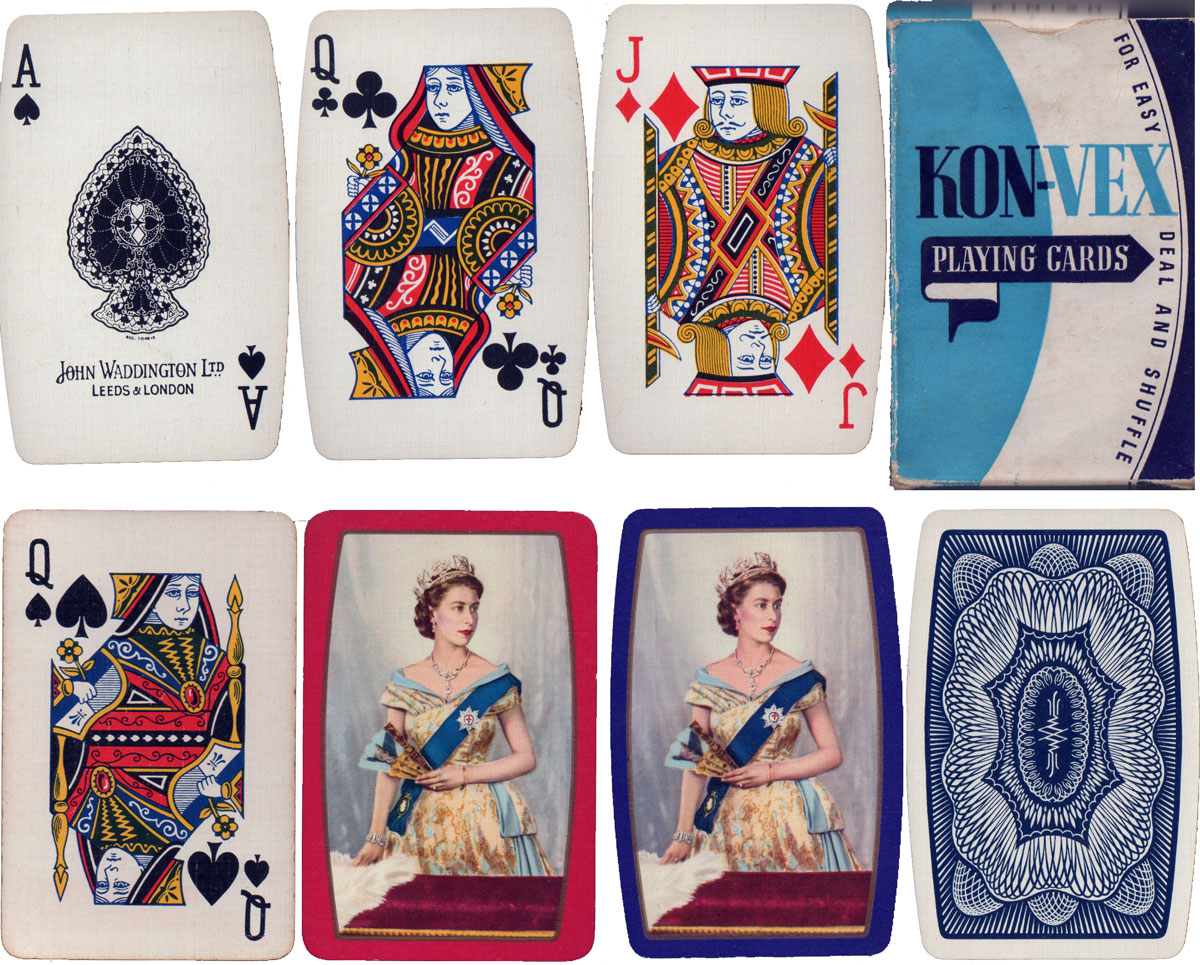
Above: ‘Kon-Vex’ playing cards manufactured by John Waddington Ltd in c.1953, designed “for easy deal and shuffle”. ‘Kon-Vex’ or barrel-shaped cards were also quite popular as advertising packs. Images courtesy Ken Lodge.
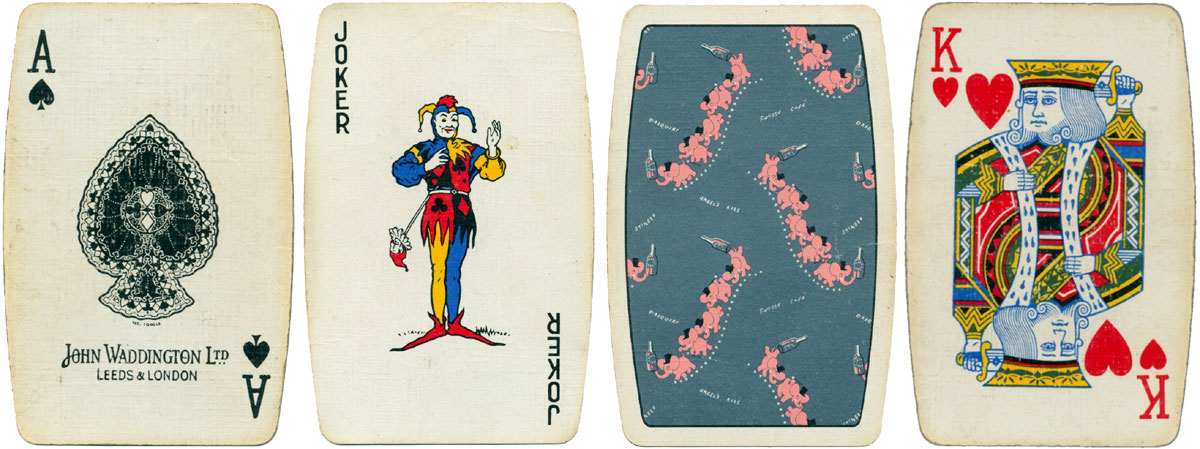
Above: 1950s promotional deck for Brown Brothers. The design on the back features pink elephants wearing top hats and the names of a few alcoholic drinks in very small print! (Click image to zoom). Images courtesy Matt Probert.
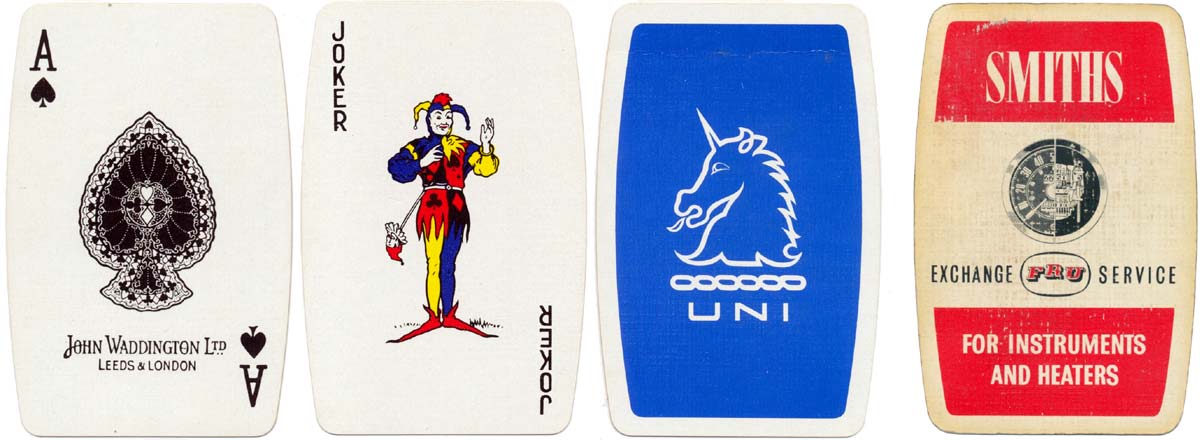
Above: assorted ‘Kon-Vex’ packs.
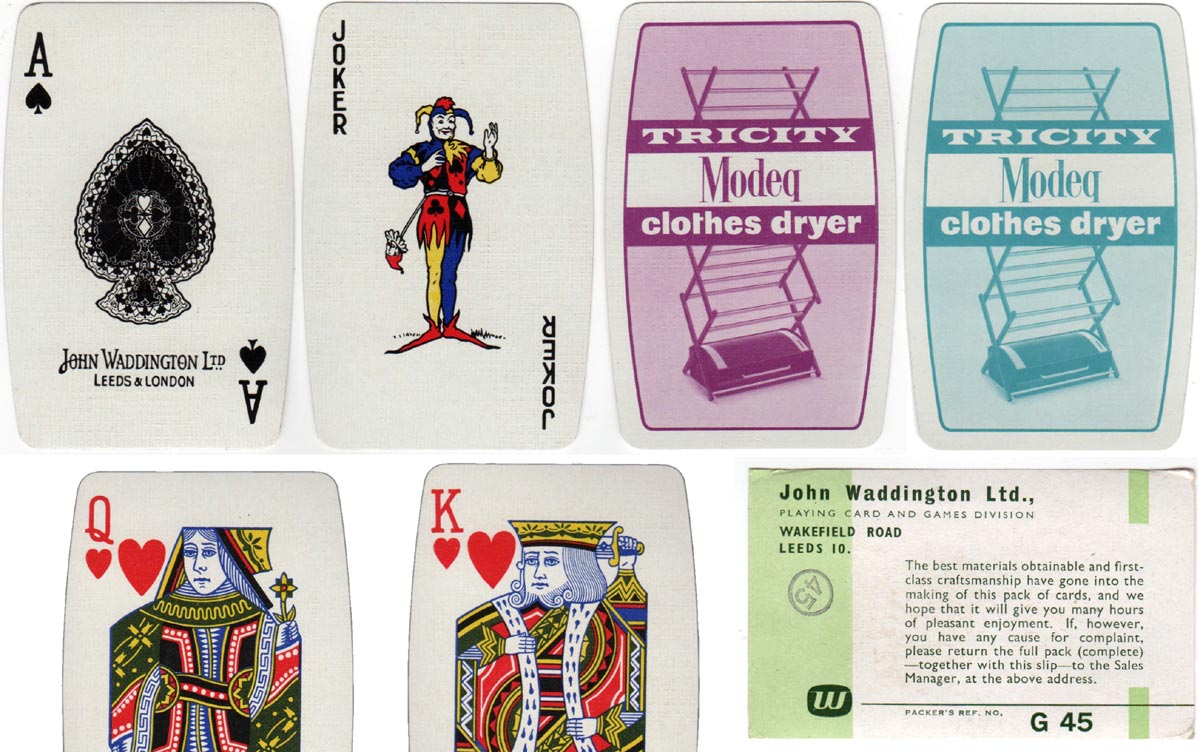
Above: advertising dual ‘Kon-Vex’ pack for Tricity Modeq Clothes Dryer with the original complaints slip. See the Box► Images courtesy Matt Probert.
‘Zulu’ playing cards
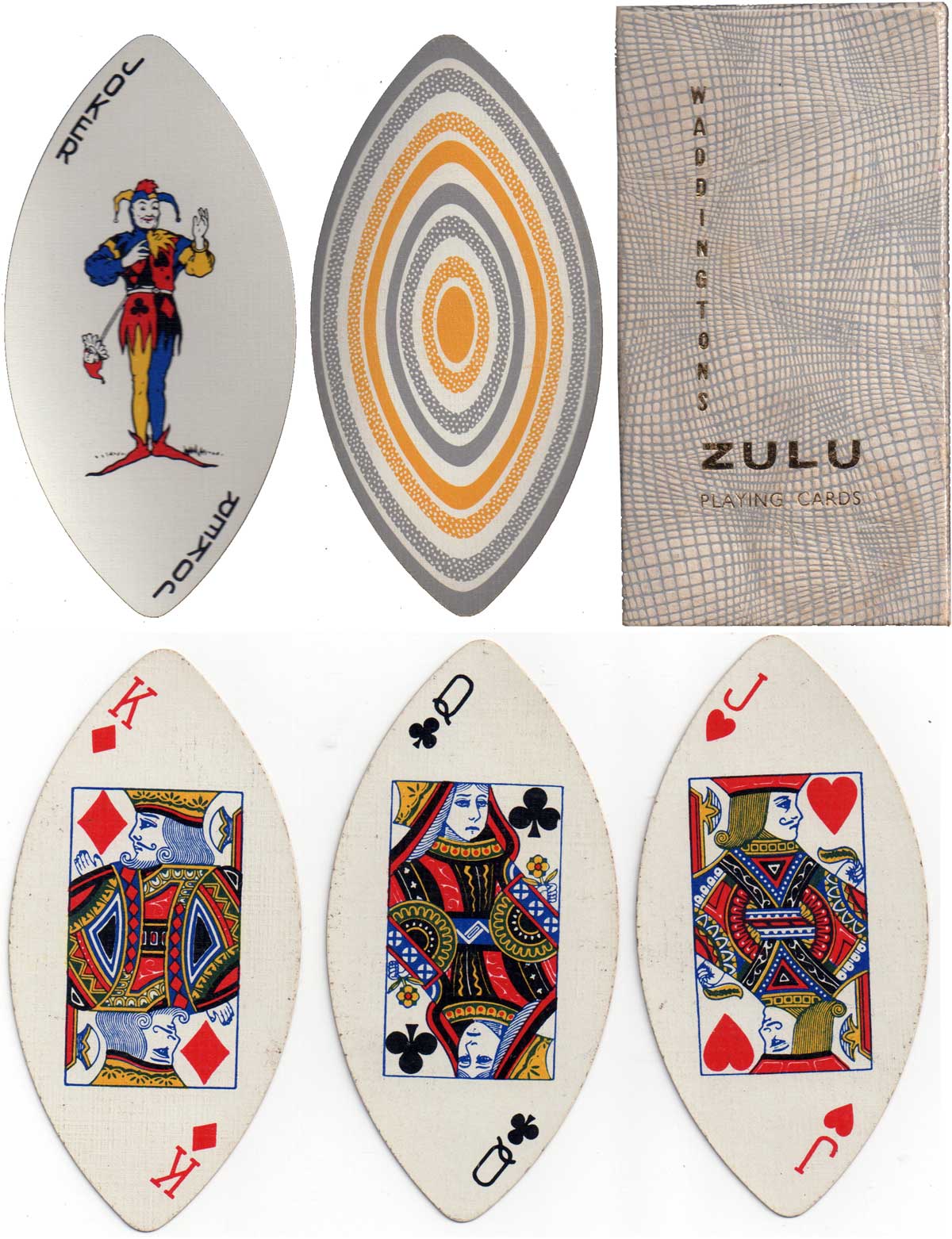
Above: ‘Zulu’ playing cards manufactured by John Waddington Ltd, 1950s. The idea behind the Zulu Shield pack was to enable fanning by only revealing the index at the top (which, incidentally, is in the style of De La Rue's cards). Not a success! Images courtesy Ken Lodge.
Ovoid playing cards
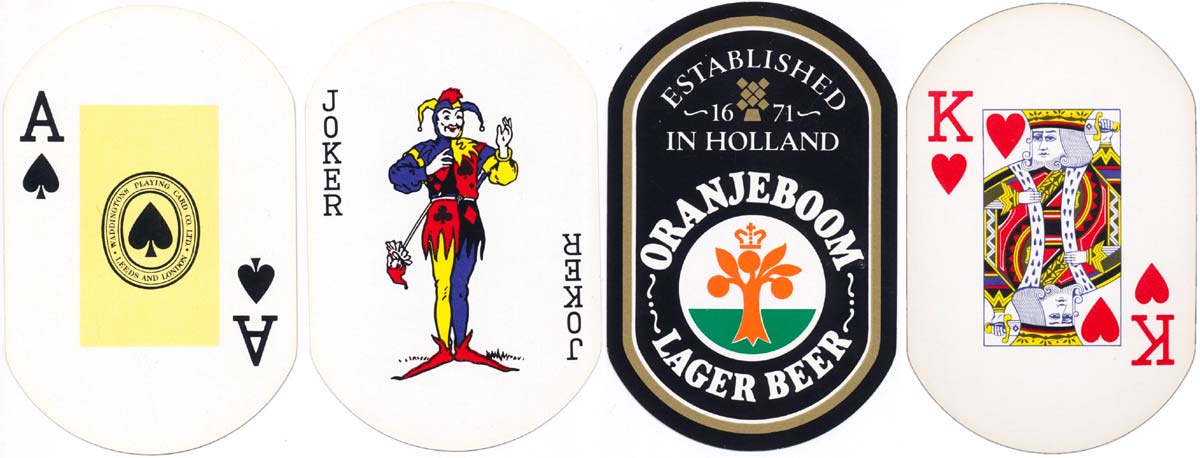
Above: ovoid shaped advertising deck for Oranjeboom lager beer, late 1970s. Image courtesy Matt Probert.
REFERENCES & CREDITS:

Lodge, Ken: The Standard English Pattern (second revised and enlarged edition), Bungay, Suffolk, 2010.
All images and research courtesy Ken Lodge unless stated otherwise.

By Simon Wintle
Member since February 01, 1996
I am the founder of The World of Playing Cards (est. 1996), a website dedicated to the history, artistry and cultural significance of playing cards and tarot. Over the years I have researched various areas of the subject, acquired and traded collections and contributed as a committee member of the IPCS and graphics editor of The Playing-Card journal. Having lived in Chile, England, Wales, and now Spain, these experiences have shaped my work and passion for playing cards. Amongst my achievements is producing a limited-edition replica of a 17th-century English pack using woodblocks and stencils—a labour of love. Today, the World of Playing Cards is a global collaborative project, with my son Adam serving as the technical driving force behind its development. His innovative efforts have helped shape the site into the thriving hub it is today. You are warmly invited to become a contributor and share your enthusiasm.
Related Articles

Scientific Whist
“Scientific Whist” : standard cards with instructions for play on the faces by Chas Goodall & Son, 1...

Agent Provocateur
Branded lingerie collection in a pack of pin-up playing cards.

Nimbus playing cards
Mike Steer’s weather-themed pack with suits in four colours and backs for cardistry.

Agatha Christie and Playing Cards revisited
Agatha Christie uses card-play as a primary focus of a story, and as a way of creating plots and mot...

The Decadent Deck
Studies in the eroticism of the female body by Inge Clayton.

Historic Shakespeare
“Historic Shakespeare” playing cards featuring Shakespearean characters by Chas Goodall & Son.

Copechat Paramount Sorting System
Preserving the past: a specimen deck showcasing edge-notched cards and their ingenious sorting syste...

Heartsette by Herbert Fitch & Co, 1893
A glimpse into a busy print and design office in late Victorian London.

Batman® playing cards
Batman playing cards published by InterCol of London 1989.

Can You Believe Your Eyes?
“Can You Believe Your Eyes?” playing cards featuring visual illusions & other oddities.

Pastime Playing Cards for the Blind
The “Pastime” Playing Cards for the Blind manufactured by Goodall & Son Limd., c.1910.

Songs with Flute accompaniment
Eighteenth century English engraved cards with music for voice and flute.

Love Tests
Vintage novelty “Love Test” cards of a slightly saucy nature but all in good fun!

Ben 10 playing cards
Characters from the American animated television science fantasy series Ben 10.

Doctor Who Trump Card Game
Game for two players in which Doctor Who and the Legendary Legion join battle with the Alien Hordes....

Disney’s Aladdin playing cards
Characters from the 1992 Disney film Aladdin.
Most Popular
Our top articles from the past 28 days

